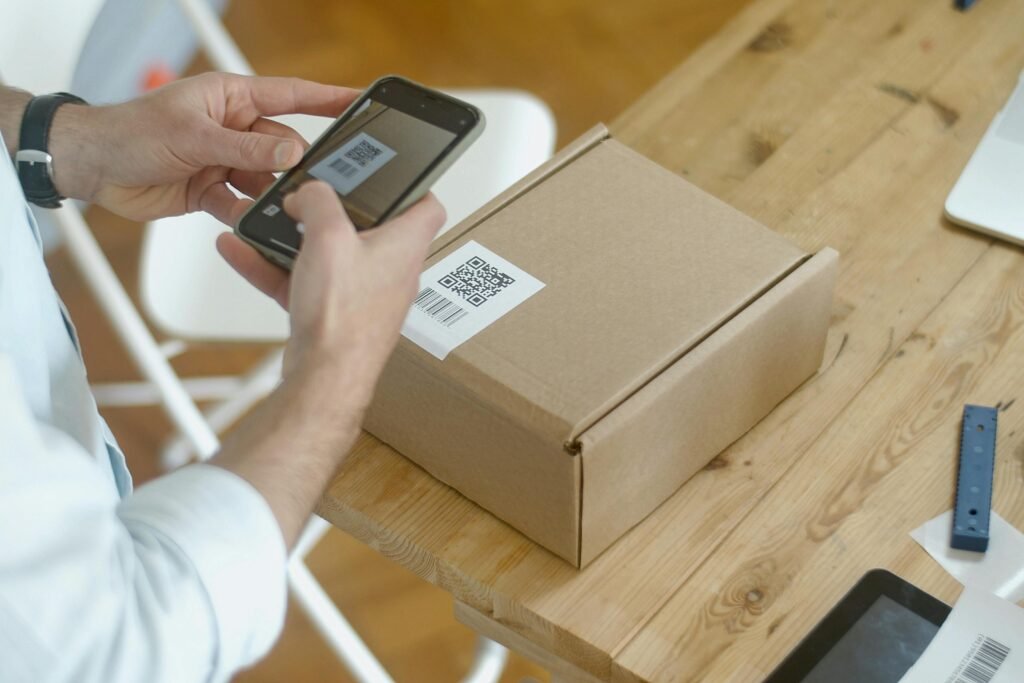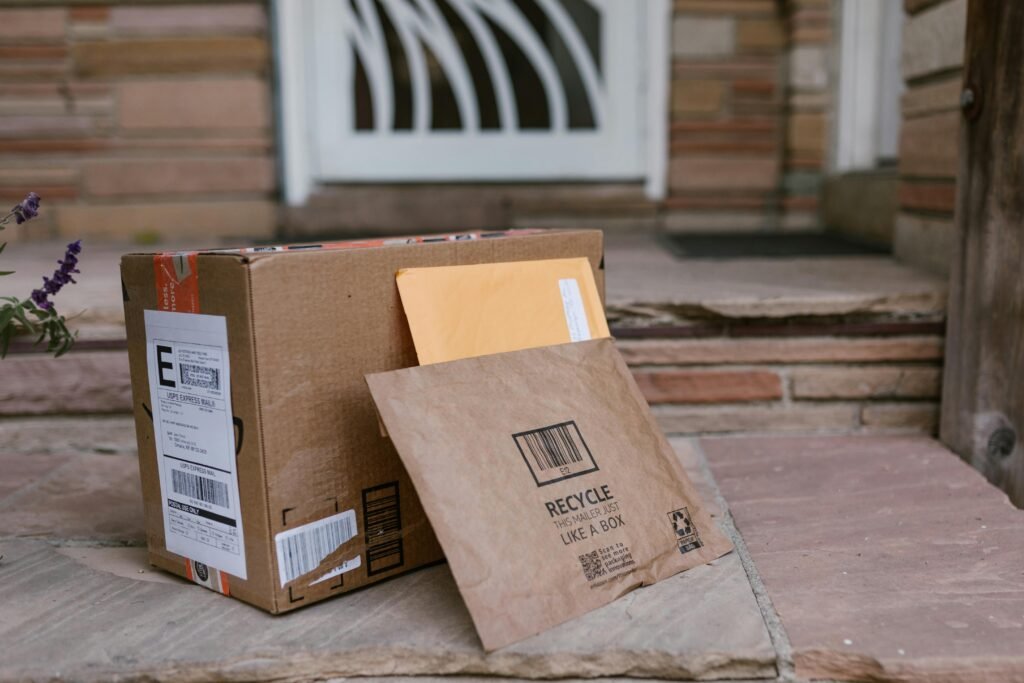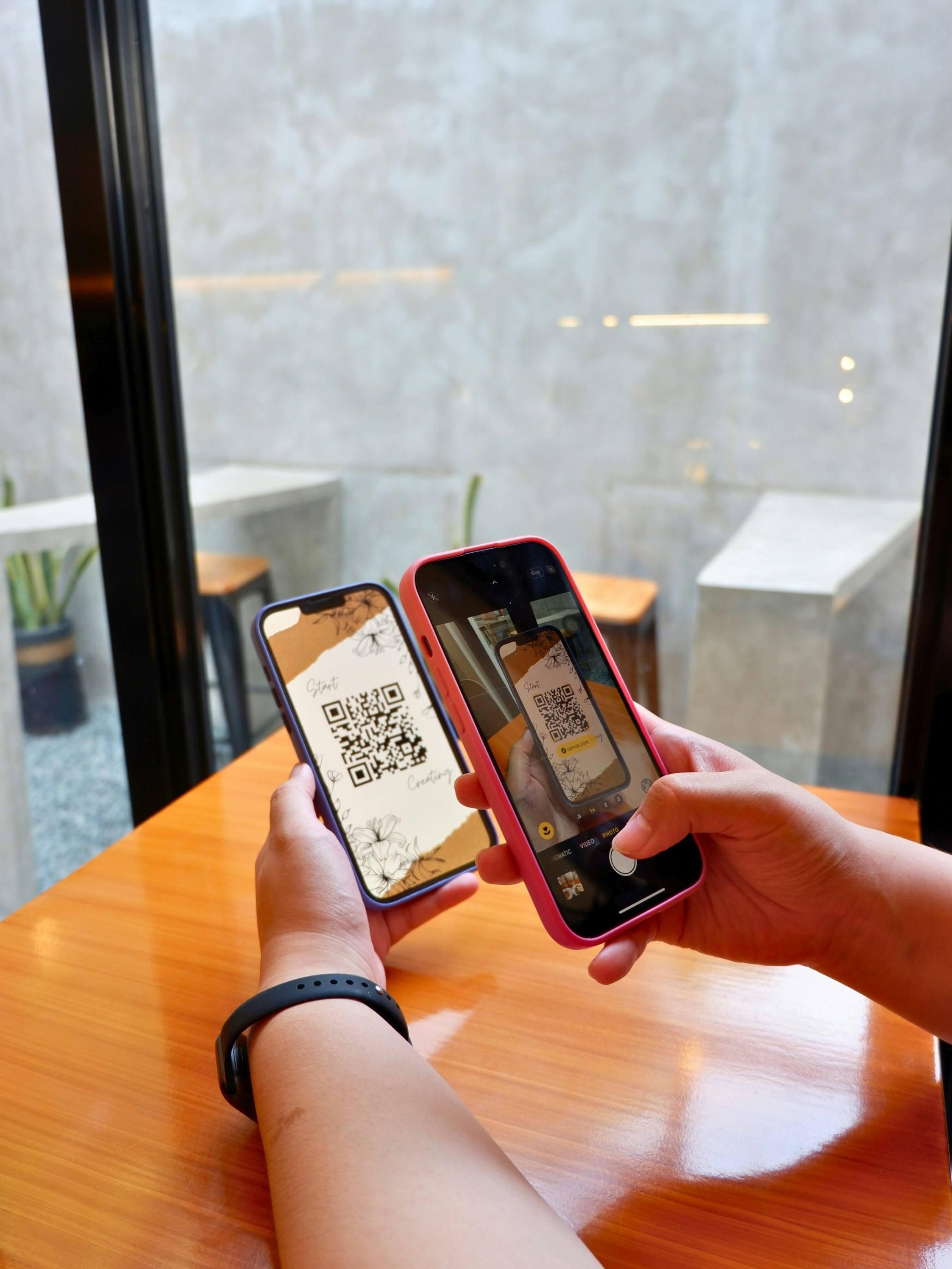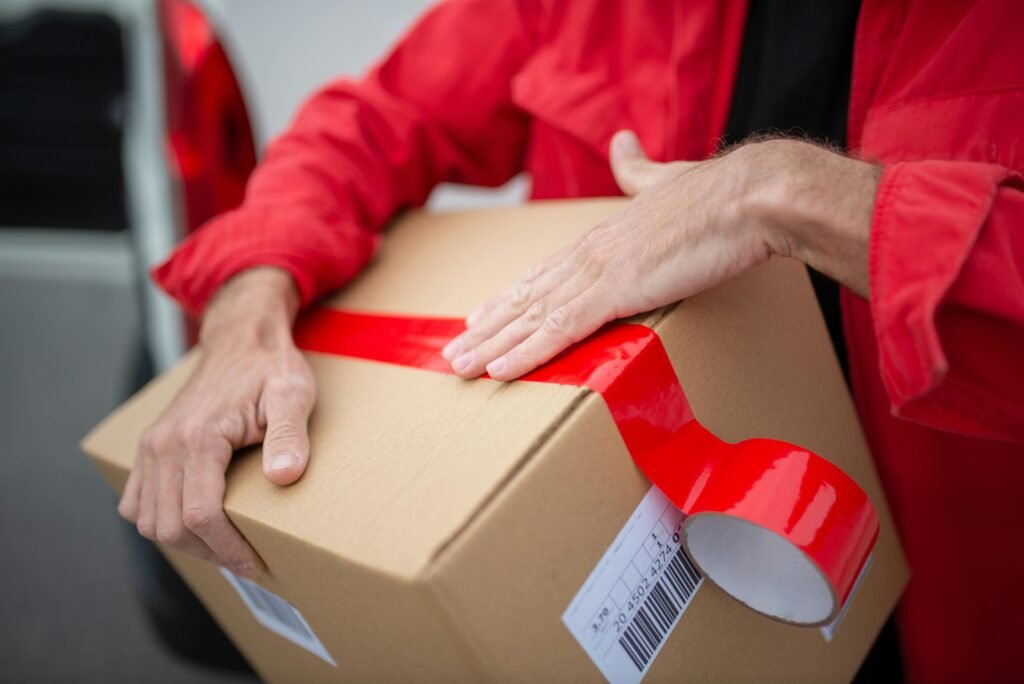Introduction to Barcodes
Barcodes are a system of encoding information in a visual format that is easily readable by machines. Typically composed of parallel lines and spaces of varying widths, barcodes serve to represent data in a machine-readable format. They were first developed in the 1950s, but their adoption has grown significantly in various industries, streamlining processes such as tracking products, managing inventory, and optimizing sales transactions.
In retail, barcodes, particularly Universal Product Codes (UPC), are ubiquitous. A UPC consists of 12 numeric digits and is primarily used to identify and price products at points of sale, facilitating quick and accurate checkout experiences. Another common barcode type is the Quick Response (QR) code, which consists of a matrix of black squares arranged on a white grid. QR codes are widely used for marketing purposes, allowing consumers to access websites, videos, and discount offers with a simple scan using their smartphones.
Beyond retail, barcodes play a crucial role in logistics, where they assist in tracking shipments through the supply chain. In inventory management, barcodes enable businesses to maintain accurate stock levels and streamline reordering processes. Different industries have adopted various types of barcodes based on their specific requirements. For example, Code 128 is often used in shipping labels due to its ability to encode alphanumeric characters, enhancing versatility in data representation.
In summary, barcodes are integral to modern commerce and industry, simplifying data collection and improving operational efficiency. As technology advances, new barcode systems continue to emerge, further expanding their applicability across diverse sectors. Understanding how barcodes function and their various types is essential for anyone involved in retail, logistics, or inventory management.
The Importance of Unique Barcodes
Unique barcodes play a critical role in the efficient functioning of inventory management systems and retail operations. Each product typically requires a unique barcode to ensure accurate identification and tracking throughout its lifecycle. When barcodes are unique, they allow retailers and suppliers to manage their inventory effectively. This means that every product can be monitored individually, which helps in preventing stockouts and overstock situations. Consequently, the efficiency of supply chain operations increases significantly, minimizing costs associated with excess inventory.
Moreover, unique barcodes facilitate precise sales tracking. When each product carries its own barcode, businesses can easily analyze sales data at a granular level. This enables them to identify trends, best-selling products, and seasonal fluctuations, which are crucial for making informed purchasing decisions. If multiple products share the same barcode, it can lead to erroneous sales data, ultimately affecting the financial health of the business.
From a customer experience perspective, unique barcodes are equally important. When customers purchase items, having unique barcodes ensures that the correct products are scanned at the checkout, preventing any confusion or errors in charges. Customers expect a seamless shopping experience, and duplicate barcodes can lead to dissatisfaction if pricing errors occur. Furthermore, unique barcodes contribute to faster checkout processes, which is essential for customer retention in a competitive retail environment.
Maintaining proper barcode assignments is paramount, as it fosters trust and reliability in retail transactions. Reusing barcodes can lead to significant complications and could tarnish a brand’s reputation. In conclusion, the significance of unique barcodes cannot be overstated, as they enhance inventory management, sales tracking, and overall customer satisfaction.
When is a Barcode Considered Reusable?
Barcodes play a crucial role in inventory management and tracking products across various industries. Understanding when a barcode can be deemed reusable is essential for efficient barcode management. A barcode is generally considered reusable when specific conditions are met, particularly concerning the lifecycle of the product it once represented.
One common scenario for barcode reuse occurs when a product is discontinued. If the item is no longer being manufactured or sold, its associated barcode may be reclaimed and reassigned to a new product. This practice can help reduce costs associated with barcode generation, but organizations should ensure their inventory systems reflect this change accurately to avoid confusion.
Another situation where reuse might be appropriate involves limited edition items. If a product was produced in a finite quantity and is no longer available, its barcode can be reallocated to a similar product that might be introduced later. This approach, however, should be handled cautiously to maintain accurate product identification and avoid potential discrepancies in inventory tracking.
It’s important to note that reusing barcodes can lead to complications if not managed properly. Each barcode should be unique to avoid issues in scanning and database management. Therefore, the decision to reuse a barcode should be made based on thorough analysis, ensuring that the previous product and the new product share similar characteristics and that there is no risk of consumer or supplier confusion.
In conclusion, barcodes can be reused under specific circumstances, primarily when products are discontinued or when a limited edition item is no longer sold. However, the process should be carefully managed to maintain clarity and organization within inventory systems.
The Process of Reusing Barcodes
Reusing a barcode can be a beneficial practice for businesses aiming to optimize their resources, but it must be conducted with caution to ensure accuracy and prevent confusion. The process of responsibly reusing a barcode begins with thorough documentation and record-keeping. It is essential to maintain an updated log that includes details of the original usage of the barcode, such as the product it was associated with and its previous lifecycle. This historical context will serve as a reference point when repurposing the barcode.
Once the records have been established, the next step involves updating inventory management systems. Companies should implement changes to reflect the new product associated with the reused barcode. This may include altering descriptions, pricing, and stock levels in the inventory system, ensuring that the data remains accurate and reliable. An effective inventory management approach can play a crucial role in preventing discrepancies that could arise from reassigning a barcode.
Informing all relevant stakeholders is another vital aspect of the barcode reuse process. Employees, suppliers, and any partners involved in the supply chain must be made aware of the change to avoid misunderstandings. Proper communication can mitigate the risk of errors during the scanning processes and ensure that everyone is aligned with the new product information. This step is particularly important for businesses that rely heavily on automated systems, as misalignment can lead to inventory mismanagement.
By following these steps—maintaining thorough records, updating inventory systems, and informing stakeholders—businesses will be better positioned to reuse barcodes without encountering complications. The careful planning of the reuse process not only promotes efficiency but also preserves the integrity of the tracking system, thereby supporting overall operational effectiveness.
Regulatory and Industry Guidelines
When it comes to barcode usage and reusability, various regulatory and industry guidelines play a crucial role in ensuring standardization and compliance across different sectors. The adoption of these guidelines is essential for maintaining the integrity of data captured by barcodes, which are widely used in retail, logistics, healthcare, and manufacturing industries. One of the foremost organizations establishing these standards is GS1, a global organization responsible for the development of supply chain standards, including those applicable to barcodes.
GS1 guidelines dictate that each barcode must be unique to avoid potential confusion in inventory management and sales tracking. This means that reusing a barcode that has previously been assigned to a product can lead to a variety of issues, including misinformation in inventory systems and legal challenges. Reusing barcodes is generally discouraged unless a product has been permanently discontinued or the information associated with that barcode is no longer relevant. In such cases, the original number must be deactivated and tracked appropriately to ensure compliance.
Moreover, adherence to barcode standards is not merely a matter of best practice; it is often mandated by regulatory bodies. In industries such as healthcare, for example, non-compliance with barcode regulations can lead to serious implications like medication errors, which may compromise patient safety. Therefore, stakeholders must remain informed about the relevant regulations and actively participate in compliance efforts.
Failure to adhere to these regulatory guidelines can result in severe repercussions, including fines, operational inefficiencies, and potential loss of market trust. Ultimately, understanding and following barcode reusability guidelines is essential for maintaining seamless operations and upholding industry standards.
Potential Issues and Risks of Reusing Barcodes
Reusing barcodes can pose significant risks that may undermine inventory management and customer satisfaction. One of the foremost concerns arises from inventory discrepancies. When a barcode is reused, it could lead to the confusion of products, resulting in inaccurate stock levels. For example, if a barcode initially assigned to a specific item is then repurposed for a different product, staff members may inadvertently mislabel or miscount items, ultimately affecting inventory reports and operational efficiency.
Customer dissatisfaction is another critical issue associated with barcode reuse. A reused barcode might be scanned erroneously at checkout, leading to incorrect prices being displayed or even wrong items being processed. Such errors can frustrate customers, eroding trust in the retailer’s ability to manage their inventory accurately. Imagine a scenario where a customer expects to purchase a high-quality product, only to end up with a different or lower-value item, due to confusion over a reused barcode. This situation can result in refunds, returns, and negative feedback, which further damages the brand’s reputation.
Additionally, there are potential legal ramifications linked to improper barcode reuse. Businesses that manage their inventory with reused barcodes might be in violation of industry standards or regulations, particularly in sectors like pharmaceuticals and food. These sectors often require unique identifiers for traceability and compliance purposes. Non-compliance could lead to hefty fines or legal actions against a company, which emphasizes the need for thorough barcode management practices.
Real-world examples of barcode reuse issues highlight the importance of maintaining strict protocols for barcode assignment. In one notable case, a leading retailer faced significant losses after implementing reused barcodes, resulting in widespread confusion among customers and massive inventory errors. Hence, the risks associated with barcode reuse are considerable and warrant careful consideration by businesses aiming to optimize their inventory systems.
Alternatives to Reusing Barcodes
While the notion of reusing barcodes may seem appealing from a cost-saving perspective, there are viable alternatives that offer effective solutions for managing product inventory and tracking. One prominent method is to generate new barcode identifiers for new products or variations. Each product should ideally have a unique barcode, ensuring accurate tracking and management within retail and supply chain systems. This approach minimizes confusion and errors associated with barcode reuse, thereby enhancing operational efficiency.
Numerous barcode generation tools and software are available that can assist businesses in creating new barcodes easily and efficiently. Some popular options range from cloud-based solutions to standalone applications, allowing for customization to meet the specific needs of individual businesses. These tools often come equipped with integration features that streamline the process of linking barcodes with existing inventory systems, further simplifying barcode management.
In addition to standalone barcode generators, companies can also consider adopting comprehensive barcode management systems. Such systems not only facilitate the generation of barcodes but also include functionalities for tracking and managing inventory levels, updating records in real-time, and generating reports on product performance. These features can significantly improve overall productivity and inventory accuracy.
Another alternative involves employing QR codes, which can store more information compared to traditional barcodes. This versatility allows businesses to adapt their product labeling efficiently without the need to reuse or overcomplicate existing barcodes. QR codes can be especially effective in engaging customers by linking them directly to product information, discounts, or promotional offers through their smartphones.
Ultimately, while reusing barcodes may seem convenient, exploring these alternatives can lead to more organized, efficient, and error-free operations in inventory management and product tracking.
Case Studies on Barcode Reuse
The practice of reusing barcodes has been a subject of interest among various companies, with outcomes that range from notable successes to considerable failures. Understanding these case studies can provide valuable insights for organizations contemplating barcode reuse.
One compelling example is that of a mid-sized retail company that decided to reuse barcodes for their seasonal products. The firm had initially assigned specific barcodes to seasonal items, such as holiday decorations. In an effort to reduce costs and minimize waste, the decision was made to reassign these barcodes to similar products in subsequent years. Initially, the transition appeared seamless, as the barcode system worked efficiently in the inventory management software. However, complications arose during the sales period when customers attempted to scan older products that had already been sold out. Confusion at the point of sale led to customer dissatisfaction and negative feedback, undermining what could have been a successful initiative. This case illustrates the potential pitfalls of barcode reuse without thorough planning and communication.
Conversely, a successful case involves a global company in the logistics sector that sought to streamline operations by reusing barcodes on shipping containers. The organization had established a robust system for tracking and managing shipments. By utilizing a set of previously used barcodes for similar container sizes and types, they managed to save significant costs associated with printing and issuing new barcodes. The transition was backed by a detailed protocol that included rigorous testing and staff training. Surprisingly, this move resulted not only in cost savings but also improved operational efficiency, as the familiar codes became easier for workers to recognize and manage. This shift demonstrates the successful integration of barcode reuse when paired with comprehensive planning and execution.
These cases highlight the diverse outcomes faced by companies that have ventured into barcode reuse. While they can yield benefits, careful consideration must be given to the specific context and execution strategies involved.
Conclusion and Best Practices
The examination of barcode reusability highlights essential considerations for businesses looking to manage inventory efficiently while maintaining accuracy in tracking. Central to our discussion is the recognition that while reusing barcodes may offer cost savings and operational efficiencies, such practice must be approached with caution. Barcodes serve as unique identifiers that facilitate the swift and accurate retrieval of information associated with products. Therefore, reusing barcodes without a comprehensive understanding of the implications can lead to confusion and errors in inventory management.
Businesses should adhere to industry standards when contemplating barcode reuse. It’s vital to ensure that any barcode being considered for reuse has been completely removed from all previous associations. This means not only clearing the data from inventory systems but also ensuring that the barcode is not in use across other platforms or environments. In addition to proper identification management, companies should also keep documentation detailing the history of their barcodes, including reasons for reuse, previous associations, and the transition process. Such record-keeping is critical for troubleshooting potential discrepancies that may arise post-reuse.
Furthermore, organizations should weigh the pros and cons of barcode reuse against potential risks such as product misidentification, customer dissatisfaction, and complications in tracking inventory. If the decision leans towards reusing barcodes, it is advisable to conduct thorough testing within a controlled environment before implementing the change on a larger scale. This will help identify any issues that might arise and allow businesses to develop contingency plans.
In summary, while barcode reusability can offer opportunities for cost savings and efficiencies, it also carries risks that must not be overlooked. By following best practices, including adhering to industry standards and maintaining comprehensive records, businesses can minimize these risks effectively and ensure seamless operations.
© barcodly.com- All rights reserved





